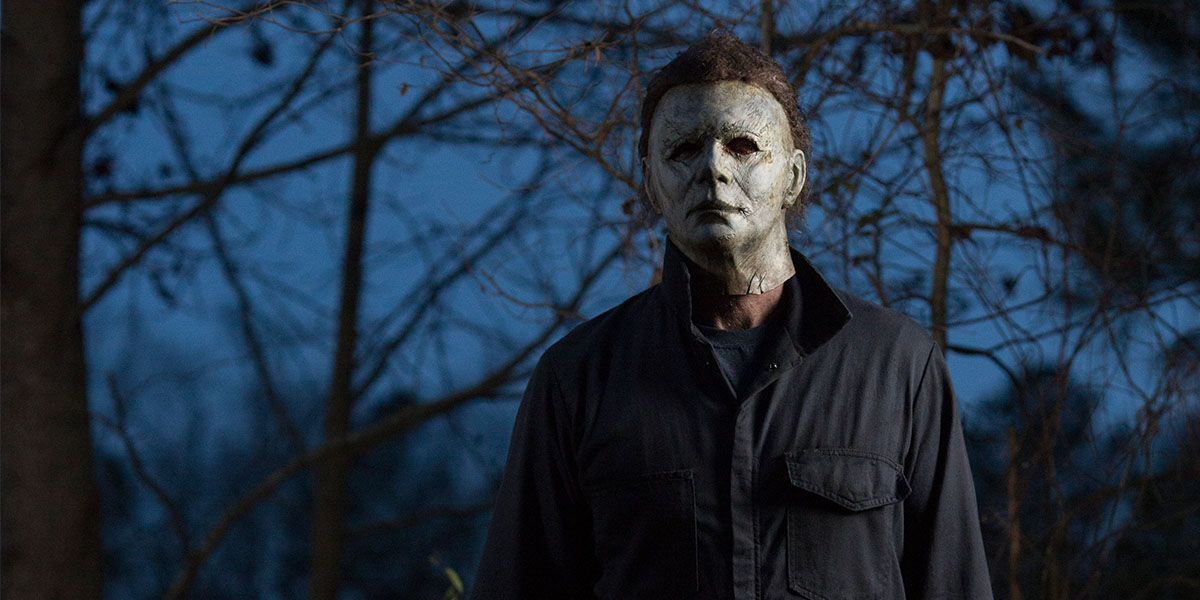Toronto Film Review: ‘Halloween’
By Peter Debruge
LOS ANGELES (Variety.com) – First the trick: David Gordon Green’s “Halloween” sequel pretends like the last nine films in the franchise don’t exist, picking up 40 years after John Carpenter’s seminal 1978 slasher movie as if none of that other nonsense has ever happened. Now the treat: His take reunites Michael Myers (once again, it’s Nick Castle under the mask) with Laurie Strode (Jamie Lee Curtis), the babysitter who got away, for a final confrontation — one they’ve both been anticipating all this time, but audiences had no reason to think they’d ever witness.
That makes this new “” an act of fan service disguised as a horror movie. The fact it works as both means that Green (who flirted with the idea of directing the “Suspiria” remake) has pulled off what he set out to do, tying up the mythology that Carpenter and company established, while delivering plenty of fresh suspense — and grisly-creative kills — for younger audiences who are buying into the “Halloween” brand without any real investment in Michael and Laurie’s unfinished business.
By contemporary horror standards, the original “Halloween” was actually quite tame, featuring just five (human) deaths, whereas this one more than triples the body count — and it does so with style, borrowing several of Carpenter’s classic devices (including a direct lift from the original’s famous first-person p.o.v. tracking shot for use as a flashback) before getting into the more prosthetic-heavy mayhem that follows. While Michael has been behind bars — a source of undying fascination for psychiatric doctor Sartain (“Winter Sleep” star Haluk Bilginer), AKA “the new Loomis” — Laurie has had time to prepare for his inevitable return, outfitting her house in the woods with all kinds of traps for when he shows up.
Perhaps the most enigmatic thing about Michael Myers all these years has been the mystery of what makes him tick. Once he gets going on a killing rampage, there’s virtually no stopping him, What pleasure does he get from killing? That’s what Sartain wants to know, although to answer the question would be to demystify precisely what makes Michael scary. Meanwhile, Laurie’s psychology clearly also fascinates Green and co-writers Jeff Fradley and Danny McBride, who choose to examine the post-traumatic impact on the “final girl,” permanently scarred by her run-in with evil incarnate all those years ago. So, Michael’s motives remain murky, but Laurie’s are fairly easy to grasp. Clearly messed up by the experience, Laurie raised her daughter Karen (Judy Greer) to defend herself, ultimately alienating her only child in the process, and now it’s up to Curtis’ wild-eyed grandma to protect her family — or to die trying.
Yes, just shy of 60, Curtis plays one of the toughest, most combat-ready grandmas ever to grace the screen, a lady who can get tossed over a balcony, fall off the roof, and still pick herself up, if it comes down to it. Karen may not appreciate her mother’s over-preparedness, but it’s sure to come in handy for Karen’s daughter Allyson (Andi Matichak), one of the few people Green gives us to root for in an ensemble that’s frequently introducing characters right before they get killed, or else forgetting about them entirely.
Some get a decent amount of screen time, including a police officer (Will Patton) who was there when Michael was arrested and a pair of British podcast reporters (Rhian Rees and Jefferson Hall) whose curiosity about the case serves a dual purpose: First, Green needs a way to hype Michael’s reputation for those just now tuning in, and second, when the talking alone doesn’t cut it, the director can use them to illustrate just how sadistic Michael can be. As a bonus, they return Michael’s creepy William Shatner mask to him before signing off for good.
Even with all that buildup, there’s something odd about the way nearly everyone views Michael, as some kind of hall-of-fame super-killer when, according to the movie’s own premise, they’ve scrubbed the board back to just the original five victims. As if trying to have it both ways, Green re-introduces the character in a vaguely Hannibal Lecter-like fashion, chained in the middle of a checkered courtyard, surrounded by barking dogs and half a dozen other crazies. Michael is soon to be transported to Glass Hill, a new facility where he’ll be forgotten for good, but something goes wrong with the transport, the bus runs off the road, and he gets loose, killing one or two guards in the process (it’s tough to keep an accurate body count when some of the murders happen off screen).
The next day is Oct. 31, exactly four decades after Michael’s “last” rampage, and before long, he finds himself lumbering around his old neighborhood in Haddonfield, Ill., up to his old tricks — that is, sneaking into houses and terrorizing babysitters. Because it’s Halloween, he can wander down the sidewalk in his mask, wielding a bloody butcher’s knife, and nobody takes much notice … until it’s too late. For fans of Carpenter’s movie, this segment of the film concentrates more of the same into a tight chunk of screen time, before inventing a way to get all the important characters — Michael, Allyson, Karen, and Sartain — out to Laurie’s semi-remote home, where the two rivals can settle the score once and for all.
And speaking of scores, Carpenter’s original theme holds up nicely here (updated/remixed with son Cody and Daniel Davies), adding synthesizer chills to scenes in which Michael goes out stalking. That’s just one of the many hat-tips Green offers to the 1978 film, whose orange-on-black opening credits (in the earlier version’s instantly recognizable ITC Serif Gothic font) give nostalgia goosebumps, while a reverse-time-lapse jack-o’-lantern swelling back to life serves as an apt metaphor for a franchise that had gone rotten over the years.

